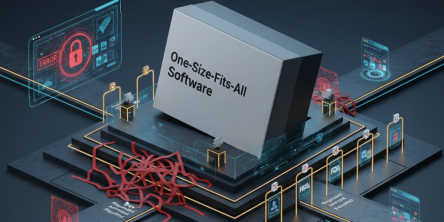Top 7 Practices for an Efficient Mobile App Onboarding

App onboarding is crucial as it decides the success or failure of the application. It is the first point of contact in a mobile app user’s journey. The onboarding process covers a series of screens. Its purpose is to educate users about the use of the app, allow them to register/login, and help them interact with the app as per their convenience. Therefore, it is vital to create a strong first impression to facilitate a positive, engaging user experience.
Why App Onboarding is Important
An effective onboarding enables businesses to optimize user interactions with the app. It helps to encourage users to keep the app on their devices and engage with it to change their lives for better.
Benefits of Mobile Application Onboarding
- Positive first impression after the app installation
- Users get more familiar about the app functionality and utilize it properly
- Businesses can increase app retention ratio and boost their conversion goals
Identify if Your App Needs Onboarding
Before jumping to create efficient onboarding experiences, you should know your app functions and how you can utilize the best onboarding practices.
For this, check the below elements and determine if they fit in your app developing strategy:
Your app has a complex workflow or if it is going to perform some complex processes
If you are redesigning your existing app and your customers need to be updated with new app features and enhancements
You are introducing a new concept, and your app users must get familiar with it
Your application mostly works on the user-generated data or has some specific interaction processes
Types of App Onboarding
Depending on your business model and app functionality, you can go for either of the three types of onboarding, as mentioned below:
- Benefits-Oriented - It demonstrates the value the user would get from the application to increase the conversion. In this approach, you focus on describing what the app does more than showing how to use it.
- Function-Oriented - Explaining the app functionality is the core focus when you go with this approach. It imparts knowledge about how users can get started with the app and how they can perform specific actions.
- Progressive - It means that the app users would see particular information as they navigate through the app progressively. It displays the relevant content based on the screen the user is on.
Mobile App Onboarding Best Practices
1. Focus on Value Proposition
As this screen is the first in your onboarding flow where your users get in touch with your app, encourage users by showing a strong value proposition of your mobile application. Rather than highlighting the app features, explain how the users can leverage the app benefits.
2. Ask Only the Must Need Information
To keep users engaged with your app, use the input fields as minimum as possible. Make sure the message tone is simple, quick, and to-the-point. Also, if your app needs to access device information such as location, and more, ask users to grant permission at the beginning of the onboarding flow. Avoid bombarding unnecessary questions and use as few words as possible.
3. Build a Quick & Simple Sign-Up Process
Make the sign-up process as fast and easy as possible. Integrate the option to use social media accounts like Twitter, Facebook, Google, and more to sign-up/login in your app.
If your app is relatively unknown to the users or you are introducing a new concept, don’t make the sign-up process mandatory at first. Provide the option to skip the app tour and sign-up process to let users navigate through essential functions of the app. If they find it engaging, they would be encouraged to create an account for accessing the whole app.
4. Create a Visual Appeal
The screens should be visually attractive to make people engaged with the application. You can opt for animations as well to create great impressions on users as they interact with the app screens.
5. Prioritize Personalization
Provide a customized experience right from the start of the onboarding process flow. You can offer choices based on the region, language, genre, and other factors to personalize the content of the app.
6. Create CTA
Include a CTA (Call to Action) to encourage users to take relevant actions. Create a well-designed, contextual CTA so that it can clarify users what they can do next.
7. Monitor & Track
Use heat maps, analytics, and other services to analyze the in-app behavior and gather insights about the user experience. Track in which areas users are interacting most with the app and where they opt-out during the onboarding process. Identify such potential pain points and enhance the onboarding flow accordingly.
Conclusion
Before finalizing the onboarding process, you should research about the user behavior, project scope, navigation options, app complexity, and other factors. A reliable partner with custom mobile application development experience can help implement the right-fit practices for your app onboarding. Though onboarding is not the only factor that impacts app success, an efficient process can double the chances of your application’s popularity.
Similar Articles
Not long ago, the idea of multiple AI agents working together, each with a specific role, collaborating to solve problems, felt like science fiction.
In today’s data-driven world, choosing the right business intelligence (BI) platform can make or break your organization's analytics success.
We all know that companies today are no longer limited to a single physical location. Work processes are also no longer strictly isolated.
It is neither secret nor news that the mind-boggling pace of digital transformation around us has totally altered consumer expectations.
In the world of finance, speed and accuracy are everything. Decisions made a day late can cost millions, and delayed visibility into financial performance can leave even the best organizations blind to risks.
Discover the best tools to enhance employee recognition, boost morale, and create a more motivated, engaged workplace culture.
At first glance, off-the-shelf software appears to be a dream come true. They are quick to set up, cheaper upfront, and marketed as “universal.”
A modern business must continually adapt. This bit everyone seems to know.
The modern healthcare industry is undergoing a significant transformation. The models of healthcare that we are used to thus far are now making way for a more data driven approach









